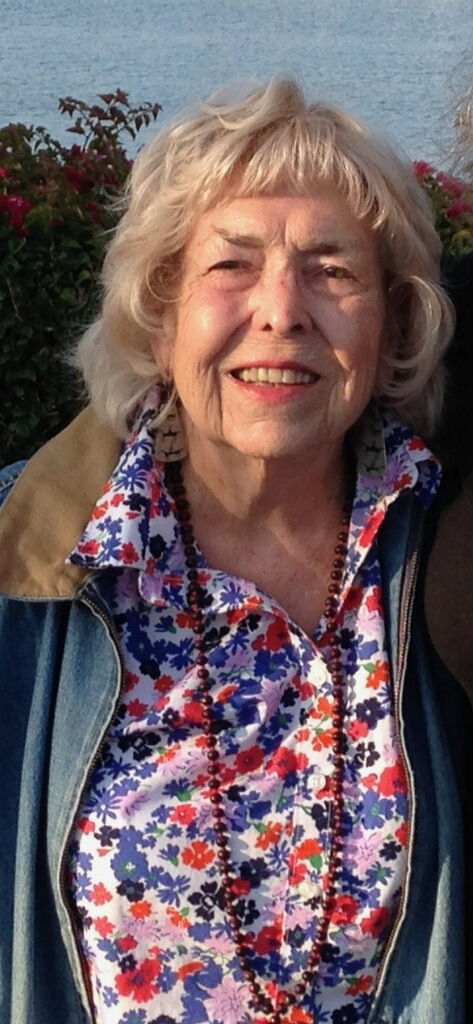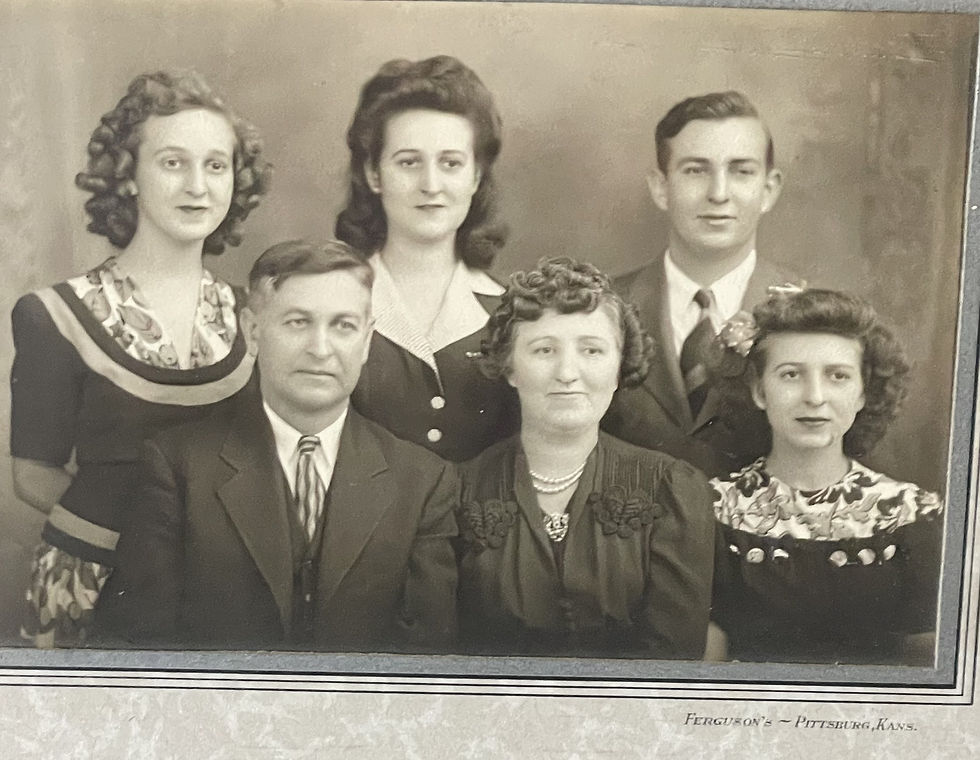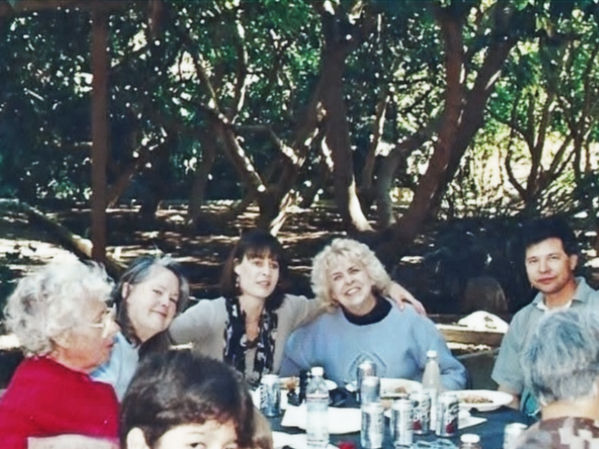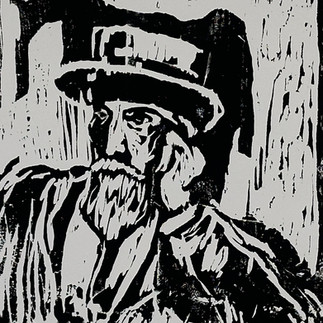A Life in Light and Landscape: The Artistic Journey of Rosalie Heacock Thompson
- Rosalie HT
- Aug 25
- 4 min read
Updated: Aug 29

Rosalie Heacock Thompson (1927–2022) was a Southern California and New Mexico-based landscape artist whose body of work spans six decades and more than 500 pieces. Best known for her plein air watercolors, Rosalie produced a body of work spanning eight decades — from early oils in the 1940s to luminous watercolor landscapes painted into her nineties. Her art offers a deeply personal record of the natural world, rendered with clarity, intimacy, and ecological sensitivity.
Early Life and Emerging Talent
Born Rosalie Grace Vilmure in Girard, Kansas, she was the youngest of four children and showed artistic promise early. Teachers in her small-town school encouraged her budding talent, and she often sketched whatever was around her—tree limbs, shadows, birds, or her own hand. This habit of daily observation and drawing stayed with her for life, grounding her in a lifelong artistic discipline.

In 1944, she and her family relocated to Southern California during her final year of high school. The new environment—its rugged coastlines, chaparral canyons, and diffused coastal light—ignited her lifelong love for landscape and watercolor painting.
An Unconventional Academic Path
Rosalie was a nontraditional student before the term was widely used. In her early 40s, she earned a Bachelor of Arts degree, cum laude, from California State University, Northridge (CSUN), in 1971. She later completed a Master of Arts in Humanities from California State University, Dominguez Hills in 1991, magna cum laude. Her master’s thesis, In Nature's Presence: European en Plein air Painters and their Historic Influence, reflected both her intellectual rigor and her commitment to situating her own work within a longer tradition of plein air painting.
Foundations of Her Training
Rosalie’s formal art education began in the early 1960s when she lived in southern New Mexico. There she studied plein air landscape painting with Theron Trombeau in La Luz and portraiture with Ramon Forman in nearby Cloudcroft. Later, in California, she continued her education with Paul Greenlee at Antelope Valley College, studying oils, printmaking, and design.
At CSUN, she worked under influential mentors including Dr. Fritz Faiss (color theory), Hans Burkhardt, Tom Fricano, Peter Plagens, Lance Richbourg, and Ernest Freed.
These studies deepened her grasp of color, light, form, and structure, and helped shape the unique clarity of her landscapes—especially the vibrant transparency that would become a hallmark of her watercolor technique. [Read more about Rosalie’s teachers and academic training in an upcoming post.]
The California Plein Air Revival
From the late 1970s onward, Rosalie played a visible role in the plein air revival of Southern California. She painted across the region’s iconic outdoor spaces, including El Matador State Beach, Broad Beach, Malibu Creek State Park, and Topanga Canyon. Many of these landscapes have since been altered or lost to wildfires and development, making her work an important visual archive.
In 1988, Rosalie became a founding member of the Plein Air Artists of the Santa Monica Mountains and Seashore, a group of dedicated painters who helped elevate the status of plein air work as both an aesthetic practice and a form of environmental witness.
The Plein Air Ritual
Rosalie’s plein air process was disciplined yet spiritual. She hiked to remote sites with a backpack full of supplies, often encountering the full range of nature’s surprises—from singing birds to tarantulas and rattlesnakes. Though small in stature, she carried a full or half watercolor sheet on board, a metal film canister retrofitted into a paint box, a low folding chair, and her journal. Each session began with a meditation on the light and air of the day, usually noted in sketches and brief reflections.

Painting on-site in natural light, she completed her works in a single session, capturing fleeting atmosphere with remarkable sensitivity. Her plein air sessions were rarely solitary. Rosalie often painted with a circle of artist friends, sharing stories and simply prepared, sensory-rich meals: ripe fruits, fresh bread, cheeses, and thoughtful conversation. These gatherings embodied the collaborative joy of being artists in nature.
Marriage, Loss, and Artistic Continuity
Rosalie married James Heacock shortly after World War II. The two first met in person after an extended correspondence while he was in the military. During their early married years in New Mexico, she began studying art more seriously.
Following Jim’s death, Rosalie later married Fletcher Bliss Thompson, a longtime friend from New Mexico. Though not formally trained in art, Bliss took up watercolor painting to share in her passion. Together, they explored the landscapes of New Mexico and beyond, often painting side by side. Their time together in the Southwest was among her most prolific creative periods.
Despite experiencing the profound losses of her first husband, her adult son Mark, and eventually Bliss, Rosalie never stopped painting. Into her 90s, she continued to produce work with clarity, purpose, and deep emotional resonance.
Legacy and Ongoing Influence
Rosalie Heacock Thompson’s paintings remain in private collections across the U.S. and continue to inspire younger generations of landscape and watercolor artists. Her practice blended technical precision with ecological sensitivity, and her career—shaped by perseverance, study, and a reverence for nature—reflects the very best of American plein air tradition.
Her name appears on gallery walls and in the memories of those who painted beside her, broke bread under the open sky, and watched her bring a landscape to life on paper. To see selected works from her long career, visit Rosalie's Portfolio.















Comments